18
Mar
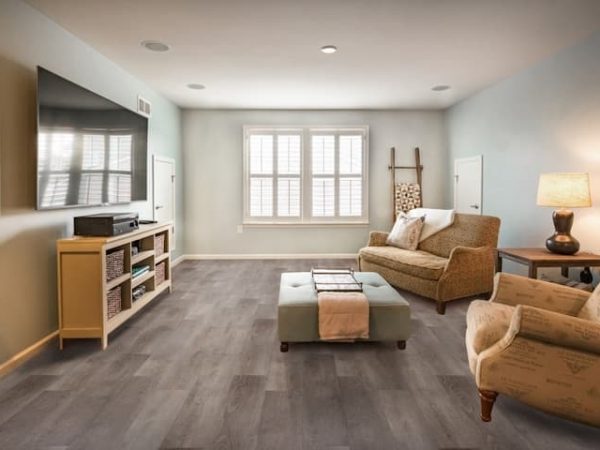
Flooring is the most important decision we have to make when we’re furnishing our house. It has to be durable and to agree with the overall style that we’re going for. Laminate, timber, bamboo, rubber, tile, vinyl, cork – the flooring options are countless and with new technologies, there are always new solutions coming out.
Currently, out of the bunch, vinyl is the most popular choice. Vinyl flooring is made from elastic materials that are synthetic like polyvinyl chloride and contain plasticisers, pigments, and different coatings. So, it consists of multiple layers pressed together to provide higher quality. It appeals to everyone – both to homeowners on a budget and those who are looking for a lavish flooring effect. That said, let’s learn a thing or two about this popular residential flooring option.
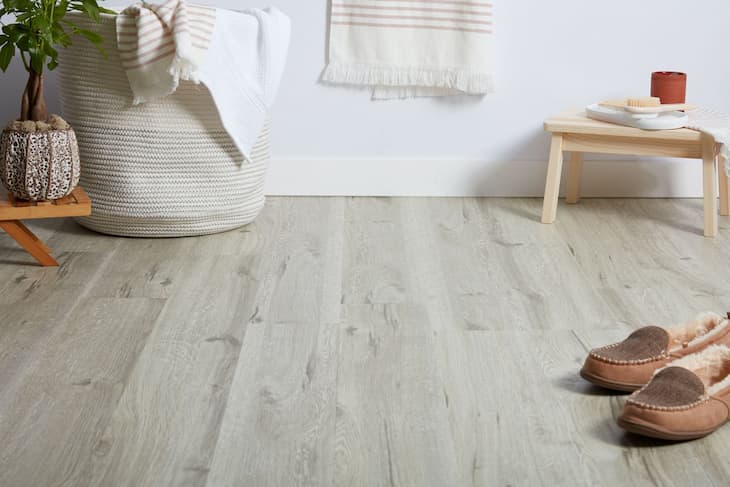
Source: hespruce.com
With so many options on the market, why should you go with vinyl? The answer lies in its many advantages over the other types of flooring.
Over the years, the manufacturing process has improved and now the vinyl flooring is 100% recyclable. It comes in three options: sheets, tiles, and planks.
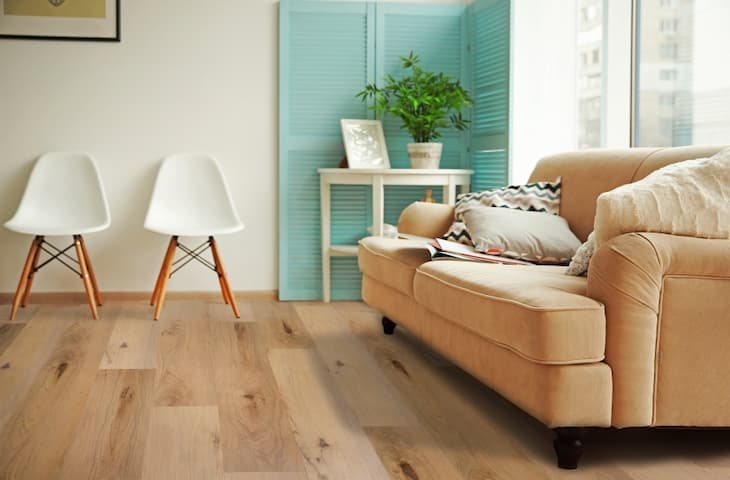
Source: flooringinc.com
Vinyl sheet or vinyl roll is flexible vinyl flooring that comes in a large, continual sheet. This makes it resistant to water because it doesn’t have any cracks in it. Depending on the shape of the room, it may require some seams. It’s very easy to install and if you buy sheet vinyl flooring for your home, you can do it yourself.
It can be bought pre-cut or customised to the room. For larger spaces, several sheets might be necessary but it’ll look seamless even if it needs to be sealed with small seams. This makes it favourable among the vinyl flooring types because it gives a nice, smooth finish.
This vinyl flooring can imitate the look of other materials like wood, stone, and tiles. Also, printed vinyl sheets are available so you could have as a floor any pattern or picture you find appealing.
Vinyl sheets can be installed over concrete, linoleum, or vinyl flooring. Just the floor needs to be clean, dry, and in a good condition. Any holes, cracks, and rough textures need to be repaired. Some floors will require underlayment because after some time the vinyl sheet floor acquires the form of the base underneath it.
If you decide to buy sheet vinyl flooring, you can either use an adhesive or install loose-lay sheet vinyl for floors. Before installation, it needs to be left in the room at least for a day to adapt and relax so you can avoid making additional cuts. If you’re using an adhesive, it needs to dry so don’t step on the new sheet flooring for 24 hours. If you decide on a loose-lay sheet, you won’t need adhesive because it has fibreglass backing that keeps the sheet flat on the floor. This is suitable for surfaces that don’t allow adhesive and it’s also easy to move around if you need to change something. In the corners or around certain furniture, double-sided tape can be used to prevent the curling of the sheet.
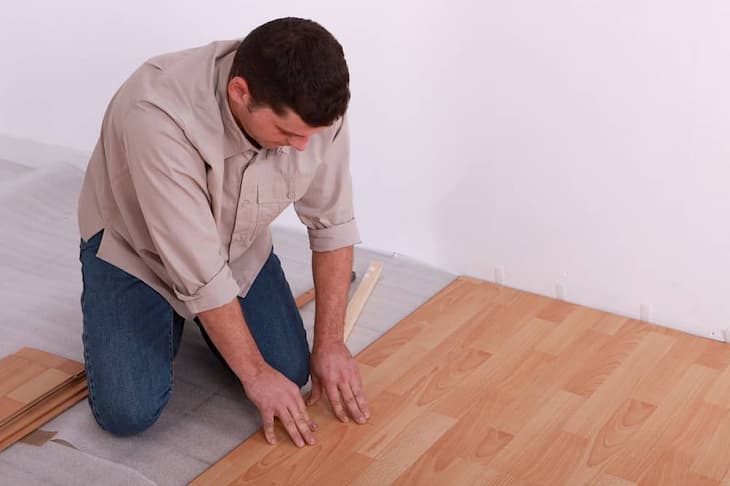
Source: onlineflooringstore.com.au
This flooring is made from similar materials as the sheets but it’s harder and cut into smaller pieces like squares or different shapes and it’s installed piece by piece. Vinyl tiles can be vinyl composition tiles or luxury vinyl tiles, the difference being that the first ones consist of a smaller amount of vinyl.
Vinyl tiles resemble natural materials like ceramic and stone more because of the seams between the tiles. They require careful installation because although they’re made from waterproof material, water can pass in-between the tiles if not properly installed. Vinyl tiles are simple to maintain and each tile can be removed and replaced easily if damage occurs.
Vinyl planks are stiff and hard like the tiles but they’re cut into planks. This makes them able to mimic the appearance of hardwood floors a lot closer. As a result, those who want to get the look of hardwood for less find vinyl planks to be the optimal choice.
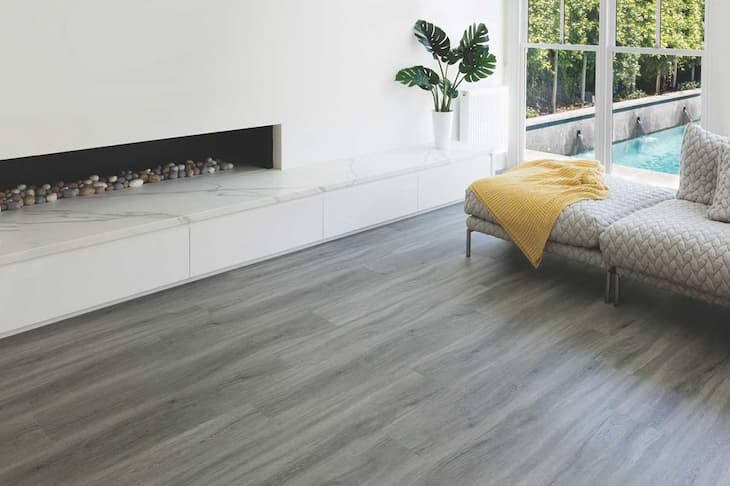
Source: solomons.com.au
There are two ways to install vinyl tiles or planks. You can glue them down using an adhesive or they can be floating and don’t require any glue.
There are self-adhesive tiles and planks that have a layer of adhesive on their back. For installation, the protective film is removed and the tile or plank is pressed down to stick. If a need for removal arises, they usually can be pulled out by warming them up first and then cutting them into smaller pieces.
If they aren’t self-adhesive, a glue for vinyl flooring is needed. The glue is applied to the ground and the tiles or planks are pressed onto it which makes them hard to remove.
Floating tiles and planks are interlocking which means that they need to click together for installation. For removal, an entire row needs to be taken out to remove one piece.
And finally, they can be loose lay that have a special material with high friction on the back so they stay in place without any adhesive. This makes them strong like the glued ones but when it comes to removal, they don’t leave any traces of glue behind and there’s no need to remove an entire row just to take out one tile or plank.
Regarding durability, the self-adhesive ones are probably the best for domestic use where there’s no high traffic. The glued-down and the interlocking ones are tough enough to withstand heavy traffic so they’re suitable for industrial use as well.